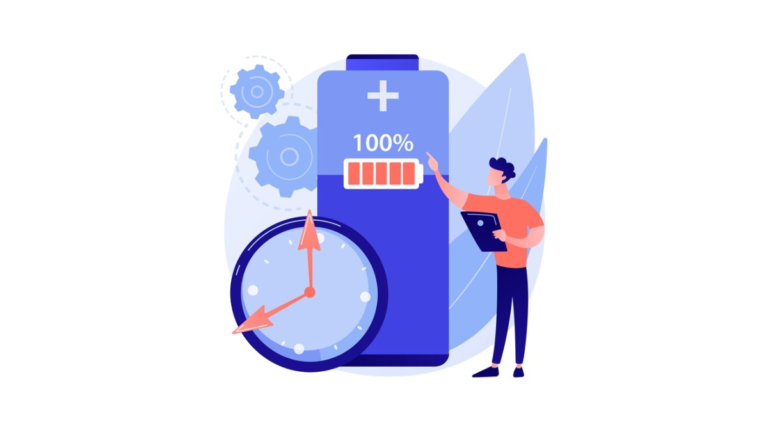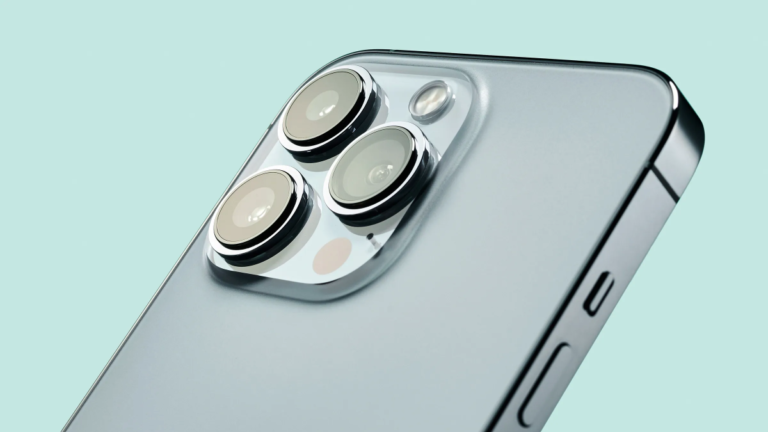Buying a smartphone today is essentially buying a commodity, and in the past few years, it seems like phone technology has hit a plateau. Each release offers only minor incremental upgrades in processor, camera, and display from the previous version.
They’ve become fashion accessories, with many feeling the need to possess the latest model, regardless of actual improvements.
Now, phones serve as more than just functional devices. We do a wide range of things with them. Be it gaming, photography or running whole entire businesses on them.
However, some people stick to basic stuff like email or Facebook (if anyone still uses it), but they still splurge on the latest iPhone Pro Max every year. Therefore, it’s crucial not to fall into the trap of constantly chasing the newest and greatest if your current device is still working fine.
After all, if it ain’t broke, don’t fix it.
Regardless, picking a phone and figuring it out can be tricky because things change fast. Guides from five years ago might not cut it anymore. That’s why you need some fresh perspective towards buying your next (or even the first) smartphone.
Let’s get into it.

What things to consider when buying a smartphone
Before we get into that, get things cleared first:
- Determine how much you’re willing to spend on a new phone. This will help narrow down your options.
- Consider what features are most important to you. Are you looking for a great camera, long battery life, gaming capabilities, or a large display? Knowing your priorities can guide your decision.
- Decide between iOS (iPhone) and Android. Both have their strengths and differences in terms of user interface, app availability, and customization options.
Now read ahead to know the exact things to consider researching to buy a smartphone
Design
When it comes to buying a smartphone, don’t just focus on the specs – look at the design too. It’s all about finding the right balance between form and function. Nowadays, many phones sell based on their standout designs.
Take Samsung’s Ultra series (or Note series before the Ultra), for instance, with its minimalist rectangle build, or Nothing’s transparent design. But it’s not just about looks – consider how it feels in your hand. Can you comfortably use it with one hand? Does it fit your grip well? Is it built like a tank? These are crucial questions.
Materials matter too. Premium flagships often boast toughened glass and a metal frame, offering a sleek and sturdy feel. Yet, glass can crack easily and be slippery, because as we know glass is glass and glass breaks. Mid-range phones might opt for a more affordable metal back, still providing a premium feel. Meanwhile, budget phones may settle for plastic, sacrificing aesthetics for durability and cost reduction.
Before you make a decision, get hands-on with the devices. Feel them, test them. It’s worth it. After all, the right smartphone for you is a blend of both form and function.
Performance
When you’re picking a smartphone, the key thing to check is performance. Benchmarks help compare performance, but real-world use matters more. Don’t just rely on specs; think about what you need the device to do. And for that you need to look at RAM, storage, and the processor (commonly called Soc or chipset).
Processor
For the processor, you’ll likely encounter Qualcomm’s Snapdragon, Mediatek’s Helio, and Apple’s A series (exclusive to iPhones). If you’re into iPhones, your choice is Apple’s A series – no alternatives there.
Android phones mostly run on Qualcomm or MediaTek. Many prefer Qualcomm’s Snapdragon as it’s generally considered better, but MediaTek’s chips aren’t far behind.
Mid-range SoCs like Snapdragon 765G are cost-effective and handle most tasks well. Flagship SoCs like Snapdragon 8 Gen 2 offer more, from 8K video to advanced games. And for casual users? Any of Qualcomm’s Snapdragon 600 or 700 series and MediaTek’s Helio work fine.
Flagship processors are good for future-proofing. But remember, you buy a smartphone not just a processor. Consider the whole package.
Some brands have their own chips. Samsung produces Exynos for better graphics performance, and Google has Tensor for its Pixel lineup, enhancing computational photography and on-device AI-ML features.
RAM and Storage
If you multitask or play games a lot, you should get more RAM. Android likes RAM. Aiming for anything like 12GB or even 16GB is good. Although I’d say even 8GB is enough for that, if the chipset is a flagship one. Casual users will be good with 6GB.
Base storage is often 64 or 128GB. If you love to take endless photos, videos and hoard apps, you’d definitely need to consider 256GB or higher. Sad we don’t get to see expandable memory options these days. RIP SD cards.
For storage, check the UFS version that ranges from UFS 2 to UFS 4. Higher UFS means faster loading, quicker data access, and better overall performance. So, keep an eye on that when choosing your next smartphone. It can make a significant difference even with the same processors on two identical phones.
Camera
When choosing a smartphone, the camera is a big deal. Gone are the days when you just had to look for megapixels and you are set. Now, it’s important to consider the lens types as well.

Photo
Megapixels (MP) measure how detailed your photos can be. Higher MP means clearer, more detailed images. And different lenses help you capture different styles of photos.
Ultra-wide lenses let you capture more scenery, great for landscapes. Wide-angle (the normal lens) lenses suit everyday photos. Telephoto lenses help zoom in without losing clarity, while macro lenses are perfect for close-up shots of small details.
The way a phone processes pictures is also very important. Some phones make colors look brighter or help pictures look clear even when it’s dark. This makes your photos look great!
Video
When focusing on smartphone video capabilities, prioritize quality and stabilization.
High-quality video recording, like 4K or even 8K, offers stunning clarity and detail, making your videos look professional.
You might not need 8K as it takes too much space. You’ll be just fine with 4K if you need super-high quality. Plus most of us do not have 8K screens to watch 8K videos. This makes it not so useful, hence you can ignore it.
Some phones now support HDR in video too, enhancing colors and contrasts, which is great for capturing vibrant scenes.
Image Stabilization (OIS or EIS)
Image stabilization is also an aspect to look for when buying a smartphone. Most blogs don’t mention it and hence most people ignore it.
In short, Optical Image Stabilization is usually better than Electronic Image Stabilization.
OIS uses physical parts inside the camera to keep your video steady. It’s great for smoothing out shakes, especially when you move the camera a lot.
EIS uses computer algorithms and tricks to make videos less shaky. It’s good, but sometimes it can make videos look a bit weird. So, OIS is better for clearer, more natural videos.
Battery
When buying a smartphone, you want a battery that lasts long, so you’re not always hunting for a charger. Battery life varies depending on how you use your phone – games and videos can drain it faster.
Quick charging is a valuable feature, especially when you’re short on time. Some phones can charge a significant amount in just a few minutes. There are plenty of phones offering 50W, 60W, 90W, 100W or even 120W (W = watt; unit of power). But the flagships restrict themselves to just 25W because super fast charging can impact the overall battery health. Also, consider if the phone supports wireless charging for added convenience.
Remember, bigger screens and more powerful processors can use more battery, so balance your needs with the battery specs.
A great battery means you can enjoy your phone all day, whether you’re chatting, playing games, or browsing the web, without worrying about running out of power.
Additional things to check when buying a smartphone:
Price
The price of a smartphone can vary a lot. Think about what you really need. If you’re mainly texting, calling, and browsing the web, a less expensive phone might be enough.
But if you’re into gaming or photography, investing more might be worthwhile. Always compare prices and look for deals or promotions.
The most expensive phone isn’t necessarily the best for everyone. Consider how the phone’s features match your needs. Don’t pay extra for features you won’t use.
Budgeting wisely means finding a balance between what you want and what you can afford.
UI/Custom ROM
In the world of smartphones, a “custom ROM” or “custom OS” is like a special flavor added by phone companies to the basic Android system, which is known as vanilla Android or AOSP (Android Open Source Project).
For example, OnePlus has Oxygen OS, known for being smooth and user-friendly. Samsung’s OneUI is designed to be easy to use, even with one hand. Google’s Pixel Experience is all about simplicity and getting the purest Android feel. There’s also Xiaomi, which has its recently launched HyperOS, changed from bloaty MIUI.
These different versions of Android give each phone its own personality.
They add extra features, change how things look on your phone, and can even impact how easy it is to use your phone. So, when you’re picking a new phone, remember to check out its custom ROM – it’s a big part of what makes each phone special!
After-Sales Service
After-sales service or after-sales support, is important when buying a smartphone. Good service means help is there if something goes wrong. Look for brands with a reputation for excellent customer service.
Check if there are service centers nearby.
Online reviews can give you an idea of the company’s service quality. Good after-sales service gives you peace of mind, knowing that you can get support when needed.
Charger Inside the Box
Not all smartphones come with a charger in the box these days. This can be an issue if you don’t have a compatible charger.
Having to buy a charger adds to the overall cost. Some phones support fast charging, but you’ll need a specific charger for that.
Before buying a phone, check if a charger is included and if it supports fast charging.
This can influence your decision, especially if you’re looking for quick and convenient charging options.
Conclusion
So, there you have it! Everything you need to think about when buying a new smartphone. Remember, the best phone for you depends on what you need it for.
Do your research, think about what’s important to you, and don’t rush your decision. A good smartphone can be your buddy for a long time, so choose wisely!
Good luck and happy phone hunting!







Very helpful blog indeed. I bought my latest smartphone considering exactly the same things in mind and I am really happy with this. Why waste hard earned money on an exorbitantly expensive stuff when you can buy similar specs in budget. Thanks for the smart suggestions with strong logic behind the facts.
thank you🙏🙏